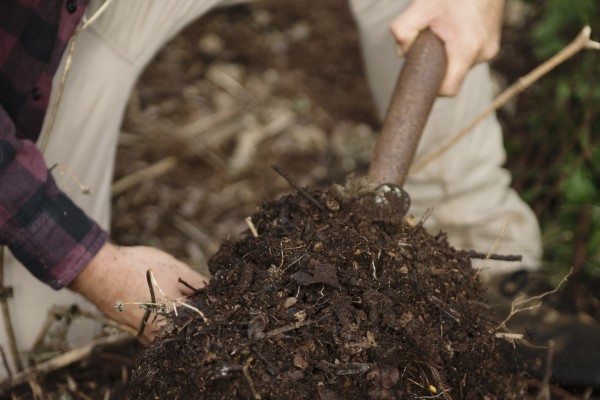A recent investigation by COR Director, Professor Terry Rose, highlights phosphorus (P) constraints to expansion of organic and sustainable farming in Australia.
Phosphorus cycling is limited in agricultural systems, including organic systems. It is estimated that 85% of P applied as fertilisers globally is removed in harvested grains and fruits. The majority of P removed in harvested crops is transported off-site for human consumption, where it finally ends up in human waste streams, and very little is returned to farms.
In organic systems, P is generally replenished through application of animal manures, compost or unprocessed rock phosphate. While the application of rock phosphate is approved by organic certification bodies, this practice runs counter to the organic principal of minimising the use of non-renewable resources.
Professor Rose and colleagues calculated the area of Australian cropping land that could be supported based on current organic farming standards, and excluding the use of rock phosphate. While just 20% of current crop land could be maintained by recycling of animal manures, a further 22.5% could be supported if technologies were developed to efficiently extract P from green waste and sewage waste. Phosphorus from human sources in particular, represents a significant untapped resource.
A similar investigation of Canadian organic agriculture supports the Australian findings (Nicksy & Entz, 2021) and both reports call for renewed investment in recovery and reuse of P from waste streams. Recycled nutrients have a key role to play in global food security and the sustainability of the agricultural sector. Professor Rose suggests that the organics sector is in a position to both drive the development of appropriate technologies, and reap the rewards.
“Using non-renewable rock phosphate sources for P fertiliser, and allowing P in waste streams to be sent to landfill, is against the organic ethos. Waste streams in their raw form may be contaminated, so the development of suitable treatment options to produce clean, recycled P fertilisers is urgently needed. The organic sector needs to be at the forefront of any movement to develop recycled P fertiliser,” said Professor Rose.
Rose TJ et al. (2022) Phosphorus constraints to potential land area cropped under organic and regenerative systems in Australia. Crop & Pasture Science. 73(3) 263-272. https://doi.org/10.1071/CP21578
Nicksy J & Entz MH (2021) Recycled nutrients as a phosphorus source for Canadian organic agriculture: a perspective. Canadian Journal of Soil Science. 101(4): 571-580. https://doi.org/10.1139/cjss-2021-0014

